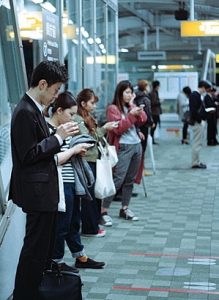By Gleb Tsipursky
If you give any leader the opportunity to increase their talent pool of potential employees by 15%—with all these new hires belonging to an underrepresented group—they’d jump at the chance, especially given tight labor markets and CEO desires to increase headcount.
Yet too few leaders realize that, according to the U.S. government, people with disabilities are the largest underrepresented cohort in this country. Some 50 million people, that is 15% of the population, are living with disabilities.
Sure, many executives are concerned by the extra investments involved in providing accommodations for people with disabilities. Yet these accommodations might not involve anything besides full-time remote work, according to a new study by the Economic Innovation Group think tank. The study found that the employment rate for people with disabilities did not simply reach the pre-pandemic level by mid-2022, but rose far past it, to the highest rate in over a decade. Remote work, combined with a tight labor market, explain this high rate, according to the researcher’s analysis.
A bit of history. Employment rates among people with disabilities dropped, along with the rest of the labor market, early in the pandemic. However, they recovered quickly. People with disabilities aged 25 to 54, the prime working age, are 3.5 percentage points more likely to be employed in Q2 2022 than they were pre-pandemic. Nondisabled individuals are still 1.1 percentage points less likely to be employed.
That means the labor market recovery for those with disabilities was substantially faster than for those without disabilities. Remote work appears to offer the major differentiator. Especially now, as the Centers for Disease Control and Prevention reports that about 19% of those who had COVID developed long COVID. Recent Census Bureau data indicates that 16 million working-age Americans suffer from it.
According to a recent study from the Federal Reserve Bank of Minneapolis, about a quarter of those with long COVID changed their employment status or working hours. That means long COVID was serious enough to interfere with work for four million people. And another just-released study from the Federal Reserve Bank of New York found the number of disabled persons in the U.S. grew by 1.7 million mainly from long COVID conditions such as fatigue and brain fog.
Although many had to drop out of the labor force due to the intensity of their symptoms, about 900,000 newly disabled people have been able to continue working. Without remote work, they might not have.
The author of the Federal Reserve Bank of New York study notes that long COVID can be considered a disability under the Americans with Disability Act, depending on the specifics of the condition. That means the law can require private employers with fifteen or more staff, as well as government agencies, to make reasonable accommodations for those with long COVID. The author notes that “telework and flexible scheduling are two accommodations that can be particularly beneficial for workers dealing with fatigue and brain fog.”
But companies shouldn’t need to worry about legal regulations. It simply makes dollars and sense to expand and diversify their talent pool by 15%. After all, extensive research shows that improving diversity boosts both decision-making and financial performance.

Companies that are offering more flexible work options have already gained significant benefits in terms of diverse hires. According to Meta chief diversity officer Maxine Williams, the candidates who accepted job offers for remote positions were “substantially more likely” to come from underrepresented groups including people with disabilities, Black, Hispanic, Alaskan Native, Native American, veterans, and women. The number of employees with disabilities increased from 4.7% to 6.2% at Meta.
I’ve helped 21 companies transition to hybrid work arrangements, and I can confirm that Meta’s numbers aren’t a fluke. The more my clients proved willing to offer remote work, the more disabled staff they recruited and retained. That includes more obvious employees, such as those with long COVID symptoms and mobility challenges. But it also includes employees with invisible disabilities, such as immunocompromised people who feel reluctant to put themselves at risk of getting COVID by coming into the office.
Unfortunately, many leaders fail to see the benefits of remote work for underrepresented groups, such as those with disabilities. Some even claim the opposite like JP Morgan’s CEO Jamie Dimon who claimed that returning to the office will aid diversity.
One part of that reasoning comes from a mental blindspot called the in-group bias. Our minds tend to favor and pay attention to the concerns of those we perceive to be part of our in-group. Dimon and other executives who lack disabilities don’t perceive people with disabilities to be part of their in-group. They thus are blind to the concerns of those with disabilities, which leads to the kind of jaw-dropping statements made by Dimon that returning to the office will aid diversity.
In-group bias is one of many dangerous judgment errors known as cognitive biases. These mental blindspots impact decision making in all life areas, ranging from the future of work to mental fitness.
Another relevant cognitive bias is the empathy gap. This term refers to our difficulty empathizing with those who aren’t part of our in-group. The lack of empathy combines with the blindness from the in-group bias, causing executives to ignore the feelings of disabled employees and prospective hires.
Omission bias also plays a role. This dangerous judgment error causes us to perceive failure to act as less problematic than acting. Consequently, executives perceive a failure to support the needs and interests of those with disabilities as a minor matter.
The failure to empower people with disabilities will prove costly to the bottom lines of companies that don’t offer remote work options to those who would benefit from such accommodations. They are limiting their talent pool by 15%. Moreover, they’re harming their ability to recruit and retain diverse candidates. And as their lawyers and HR departments will tell them, they are putting themselves in legal jeopardy from violating the ADA.
By contrast, companies like Meta—and my clients—that offer remote work opportunities are seizing a competitive advantage by recruiting these underrepresented candidates and expanding their talent pool, and lowering costs of labor while increasing diversity. The future belongs to the savvy companies that offer the flexibility that disabled people need.
Gleb Tsipursky, PhD, is the CEO of the future of work consultancy Disaster Avoidance Experts and author of ?Leading Hybrid and Remote Teams: A Manual on Benchmarking to Best Practices for Competitive Advantage.
(8)







